Slow cookers are a staple in many kitchens for their convenience, efficiency, and ability to turn simple ingredients into flavorful, tender meals. From stews to roasts, they excel at transforming tough cuts of meat and hearty vegetables into comforting dishes with minimal effort. However, while the slow cooker is a powerful tool, it’s not ideal for every type of ingredient.
Some foods simply don’t hold up well to long, moist cooking conditions. Whether they become mushy, lose their flavor, or even develop an unappetizing texture, certain ingredients can ruin an otherwise delicious dish when cooked too long or at the wrong temperature. Understanding which foods to avoid can help you get the most out of your slow cooker and ensure your meals come out just right.
In this article, we’ll walk through 14 common foods that aren’t well-suited for slow cooking. Whether you’re a seasoned slow-cooker user or just getting started, knowing which ingredients to leave out — or add at the right time — can make all the difference. Let’s take a look at what to skip and why.
1. Broccoli

Fresh broccoli transforms from vibrant green perfection into an unappetizing mess when subjected to hours of slow cooking. The delicate florets break down completely, losing their satisfying crunch and bright color while developing a bitter, sulfurous taste that can overpower your entire dish. Those beautiful tree-like structures become mushy clumps that nobody wants to eat. The extended heat exposure breaks down the cell walls too aggressively, creating a texture similar to baby food. If your recipe absolutely requires broccoli, add it during the final thirty minutes of cooking time. This preserves both the nutritional value and appealing texture that makes broccoli a beloved vegetable when prepared correctly.
2. Rice (Especially White Rice)
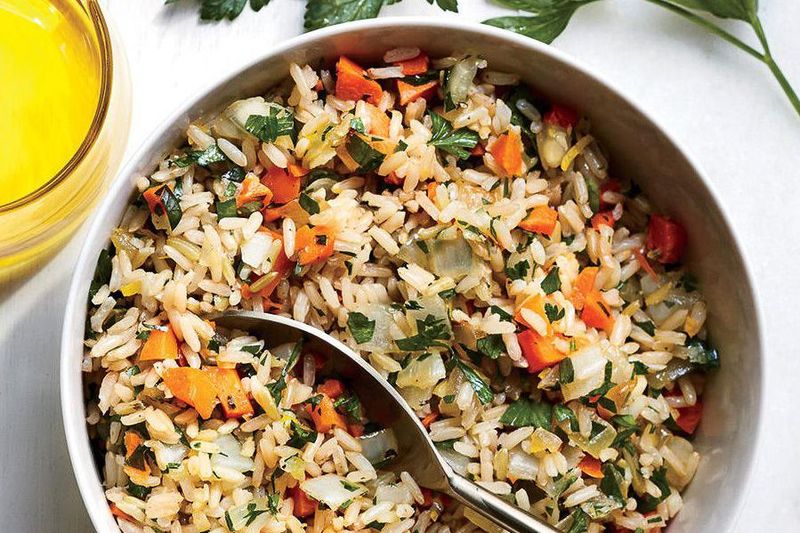
White rice seems like a perfect slow cooker candidate, but appearances can be deceiving. Extended cooking transforms individual grains into a gummy, paste-like substance that resembles wallpaper glue more than fluffy rice. The starches release too much during the long cooking process, creating an unpleasant sticky mess. Even perfectly measured water ratios cannot prevent this textural disaster when rice cooks for several hours. Smart cooks prepare rice separately using traditional stovetop or rice cooker methods, then stir it into their slow-cooked dishes just before serving. This approach ensures fluffy, separate grains that complement rather than compete with other flavors in your meal.
3. Leafy Greens (Spinach, Kale, etc.)
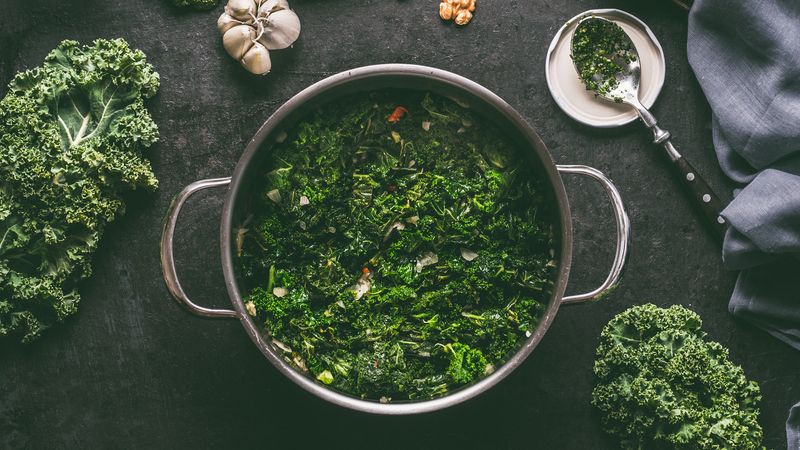
These nutritious powerhouses disintegrate into slimy, dark green clumps that look more like pond scum than vegetables. The high water content in leafy greens causes them to wilt dramatically, losing volume and developing an unpleasant slippery texture. Extended heat exposure destroys their cellular structure completely. Preserve both nutrition and appeal by adding leafy greens during the last half-hour of cooking. This timing allows them to wilt slightly while maintaining enough structure to remain recognizable and palatable in your finished dish.
4. Delicate Potatoes (Like Russets)
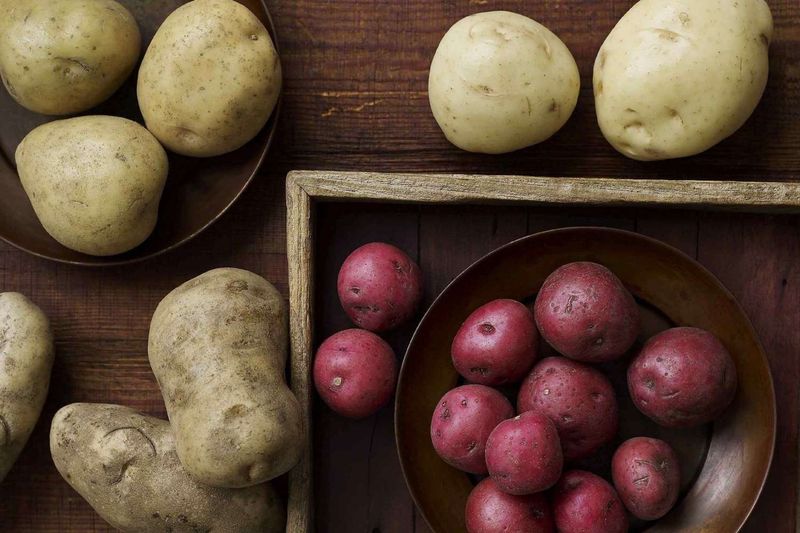
Russet potatoes excel at making fluffy mashed potatoes and crispy fries, but they become your slow cooker’s worst enemy. Their high starch content and fluffy texture work against them during extended cooking, causing complete breakdown into grainy, unappetizing chunks. These potatoes literally fall apart, creating a mealy texture that resembles wet sand more than the satisfying bite you expect from properly cooked potatoes. Waxy varieties like red potatoes or Yukon Gold hold their shape much better during slow cooking. Their lower starch content and firmer structure help them maintain integrity even after hours of gentle heat, making them the superior choice for stews and slow-cooked dishes.
5. Fish
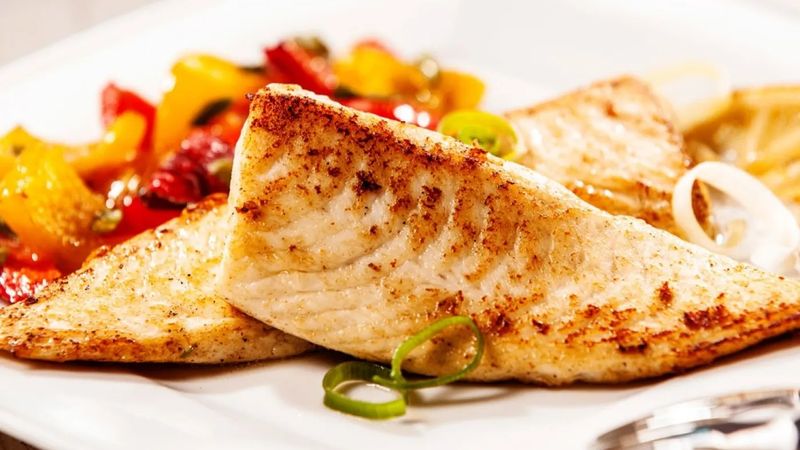
Delicate fish fillets like cod, tilapia, and sole require gentle, quick cooking to maintain their tender, flaky texture. Slow cookers provide the exact opposite environment, subjecting these proteins to prolonged heat that transforms them into dry, stringy disappointments. Fish proteins coagulate quickly, and extended cooking causes moisture loss and tough, chewy textures. What should be succulent and tender becomes reminiscent of cardboard. If your recipe demands fish, add it during the final fifteen to twenty minutes of cooking time. This brief exposure provides enough heat to cook the fish through while preserving the delicate texture that makes seafood so appealing when prepared correctly.
6. Dairy (Milk, Cream, Yogurt, Sour Cream)
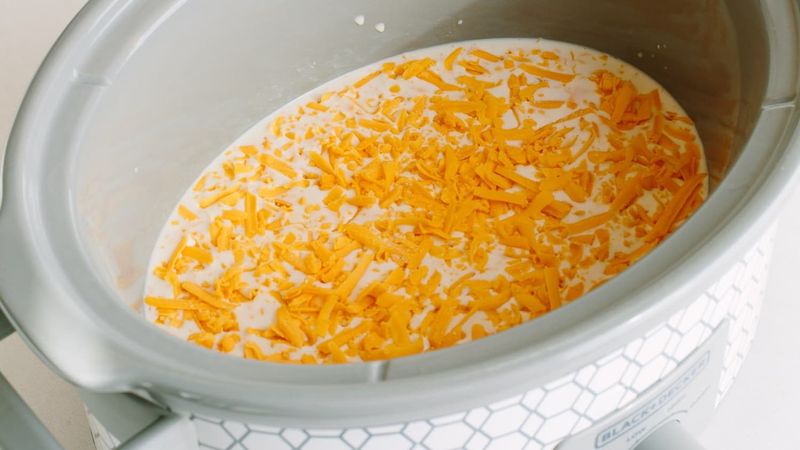
Dairy products and slow cookers have a complicated relationship that rarely ends well. Extended heat exposure causes proteins in milk, cream, and yogurt to coagulate and separate, creating an unappetizing curdled mess instead of the smooth, creamy texture you desire. The separation process creates lumpy, grainy textures that cannot be reversed through stirring or additional cooking. Your beautiful cream sauce becomes a broken, unpalatable disaster. Professional chefs always add dairy products during the final minutes of cooking or stir them in just before serving. This technique preserves the smooth, rich consistency that makes dairy-based dishes so satisfying and delicious when prepared with proper timing.
7. Eggs
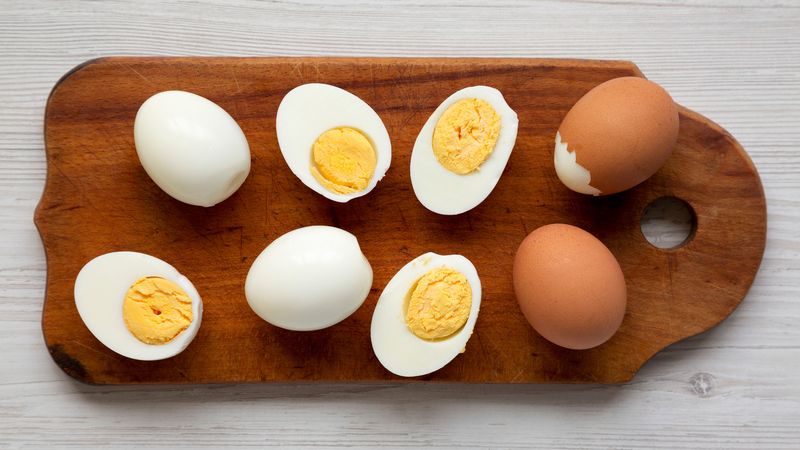
Eggs undergo dramatic textural changes when exposed to prolonged heat, transforming from creamy perfection into rubbery, unpleasant masses. The proteins in eggs coagulate quickly, and extended slow cooking pushes them far beyond the point of palatability. What starts as smooth, rich egg becomes bouncy and tough, resembling rubber more than food. The extended cooking time eliminates any possibility of achieving the tender, custard-like texture that makes eggs so versatile and appealing. Eggs work best in recipes with shorter cooking times or when added near the end of the cooking process. Quick-cooking methods preserve their natural texture and prevent the unfortunate transformation into something nobody wants to eat.
8. Cheese (Especially Soft Cheeses)
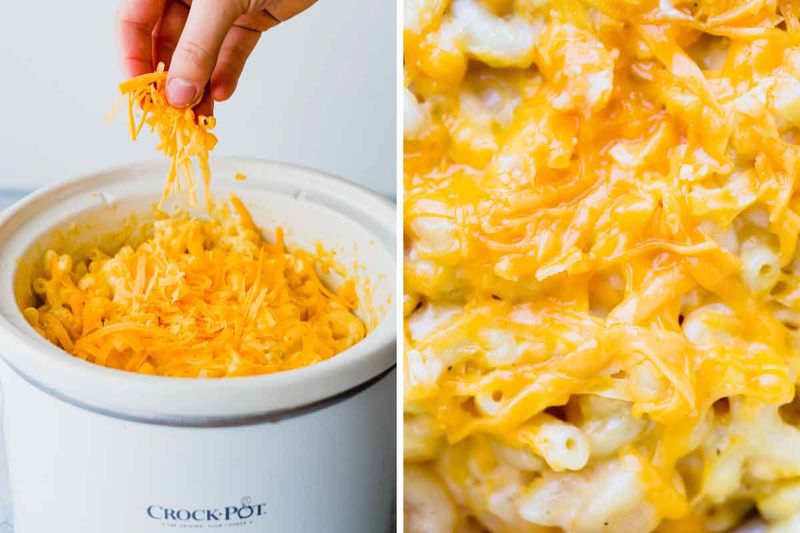
Cheese seems like a natural slow cooker ingredient, but extended heat exposure causes most varieties to separate into oily solids and liquids. Soft cheeses like mozzarella and cheddar are particularly vulnerable to this breakdown, creating greasy, unappetizing messes instead of smooth, melted perfection. The proteins and fats separate under prolonged heat, resulting in a broken sauce that cannot be repaired through stirring or temperature adjustment. Achieve better results by adding cheese during the final minutes of cooking, allowing just enough time for melting without separation. This timing preserves the smooth, creamy texture that makes cheese such a beloved ingredient in comfort food dishes.
9. Fresh Garlic
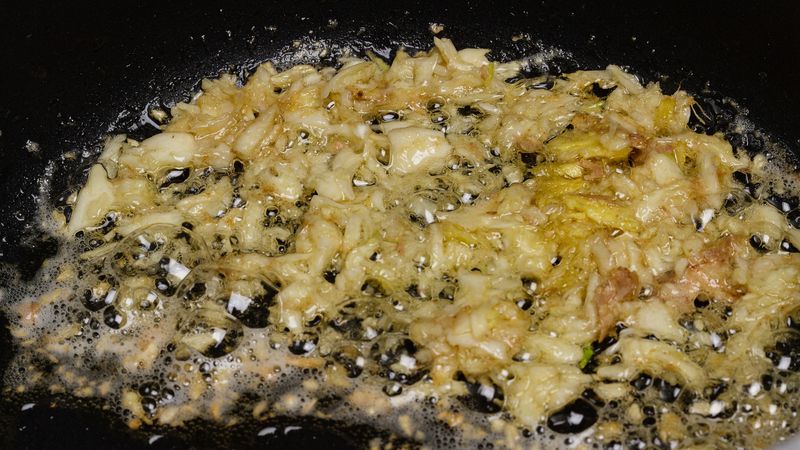
Fresh garlic cloves develop an unpleasantly bitter, acrid flavor when subjected to hours of slow cooking. The compounds responsible for garlic’s appealing pungency transform into harsh, overpowering tastes that can ruin an entire dish. Extended heat exposure causes garlic to lose its characteristic sharpness and develop burnt, bitter notes that dominate other flavors. The transformation is irreversible and intensifies over time. Sautéing garlic briefly before adding it to your slow cooker helps mellow its intensity while preserving pleasant flavors. Alternatively, roasted garlic provides sweet, mellow notes that complement long cooking times. These preparation methods prevent the bitter disappointment that raw garlic creates in slow-cooked dishes.
10. Pasta
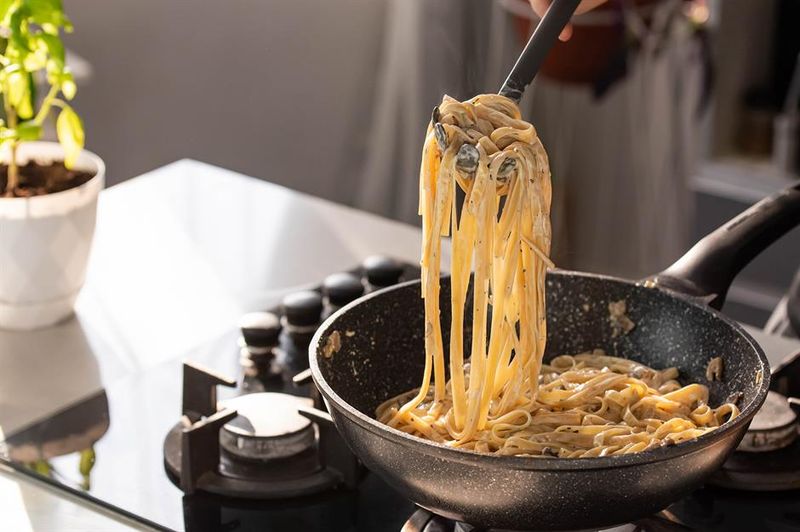
Pasta transforms from perfectly al dente to mushy disappointment when subjected to slow cooker conditions. The extended cooking time breaks down the gluten structure that gives pasta its satisfying bite, creating shapeless, soggy masses that bear little resemblance to proper noodles. Even sturdy pasta shapes like penne and rigatoni cannot withstand hours of moist heat without losing their structural integrity completely. Cook pasta separately using traditional boiling methods, then add it to your slow-cooked dish just before serving. This approach ensures proper texture while allowing the pasta to absorb some of the delicious flavors from your sauce without becoming an unrecognizable mess.
11. Zucchini and Other Summer Squash
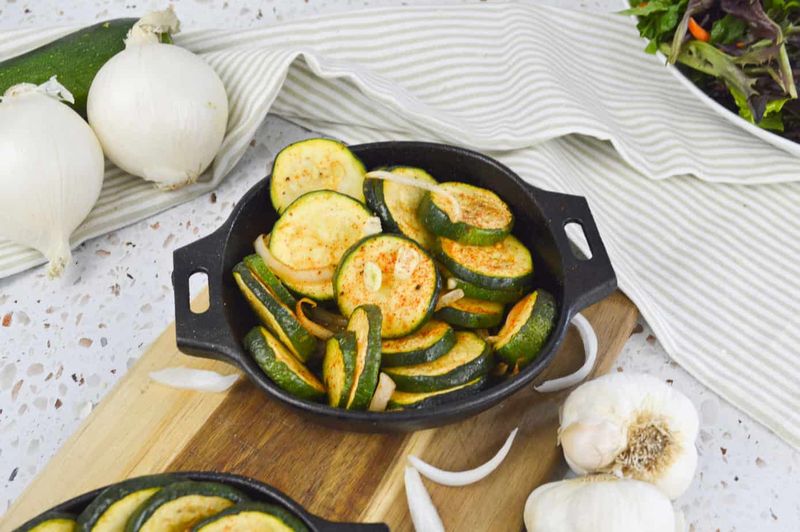
Summer squashes like zucchini and yellow squash contain enormous amounts of water that release during cooking, creating soggy, shapeless vegetables that add unwanted liquid to your dish. Their delicate cellular structure cannot withstand prolonged heat exposure. These vegetables literally dissolve into watery mush, losing all textural appeal while diluting the flavors of other ingredients. The high water content becomes problematic in slow cooker environments. If your recipe requires summer squash, add it during the final hour of cooking to maintain some structural integrity. Better yet, consider substituting heartier vegetables like winter squash or sweet potatoes that hold their shape throughout extended cooking times.
12. Shellfish (Shrimp, Clams, Mussels)
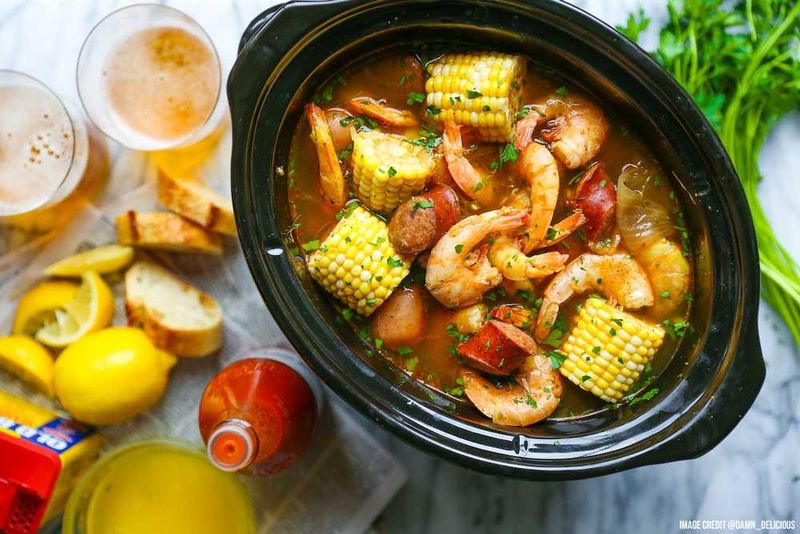
Shellfish cook incredibly quickly under normal circumstances, requiring only minutes to reach perfect doneness. Slow cooker environments subject these delicate proteins to hours of heat, transforming tender morsels into rubbery, chewy disappointments that resemble bouncy balls more than food. Shrimp curl up tightly and become tough, while clams and mussels develop unpleasant, chewy textures that make them nearly inedible. If your recipe absolutely requires shellfish, add them during the final five to ten minutes of cooking time. This brief exposure provides enough heat to cook them through while preserving the tender, succulent texture that makes shellfish such prized ingredients in seafood dishes.
13. Delicate Herbs (Basil, Cilantro, Parsley)
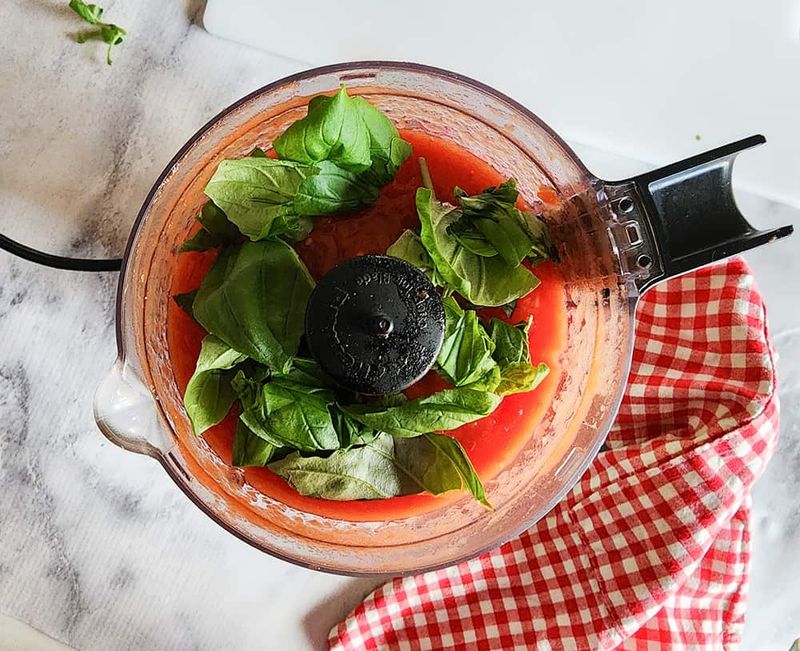
Fresh herbs like basil, cilantro, and parsley lose their vibrant flavors and appealing colors when exposed to prolonged heat. These delicate ingredients become dark, lifeless shadows of their former selves, contributing little beyond an unappealing appearance to your finished dish. The volatile oils responsible for herbs’ distinctive flavors evaporate during extended cooking, leaving behind bitter, unpleasant tastes that cannot enhance your meal. Preserve both flavor and visual appeal by adding fresh herbs just before serving or during the final minutes of cooking. This timing allows their bright flavors to infuse your dish while maintaining the fresh, vibrant qualities that make herbs such valuable culinary ingredients.
14. Too Much Salt
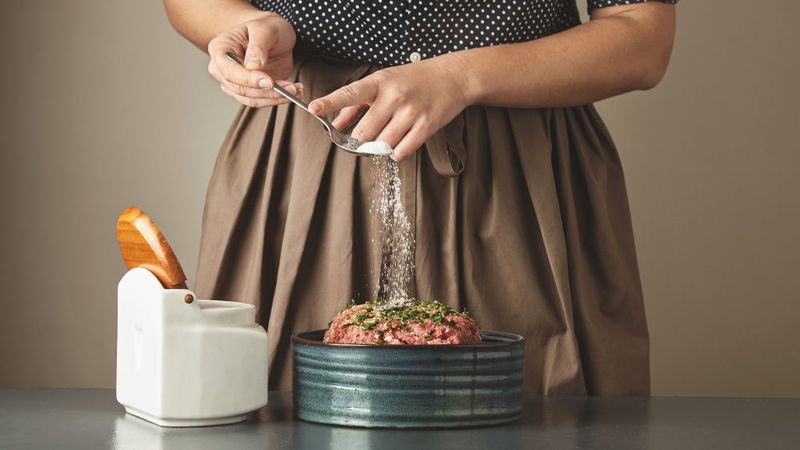
Salt concentration intensifies dramatically during slow cooking as liquids evaporate and flavors concentrate. What seems like appropriate seasoning at the beginning transforms into an inedible, overly salty disaster that cannot be corrected once the damage is done. The reduction process amplifies salt levels exponentially, creating dishes so intensely seasoned that they become completely inedible. Additional ingredients cannot dilute the overwhelming saltiness effectively. Season lightly at the beginning of cooking, then adjust salt levels just before serving when you can accurately taste the concentrated flavors. This approach prevents the common mistake of over-salting that ruins otherwise perfectly prepared slow-cooked meals and ensures balanced, enjoyable flavors.
Leave a comment